Nothing Ear (a)

A feature-rich set of wireless headphones that comfortably outperform an already tempting price point. The Nothing Ear (a) sound good whatever you’re listening to, have a mostly successful ANC system and come packed with extra features.
Pros
- Standout design that looks great in yellow
- Good sound quality
- ANC gets the job done
Cons
- Not the comfiest buds
- Fit takes some getting used to
Key Features
- Bluetooth supportBluetooth 5.3 with SBC, AAC, LDAC codec compatibility
- Battery Life42.5 hours with the charging case
Introduction
Budget true wireless earbuds are getting better, and the Nothing Ear (a) are one of the very best sets I have ever used.
Launched alongside the Nothing Ear, a successor to the Ear (2), the Ear (a) replace Nothing’s previous budget set – the Ear (stick). While I appreciate Nothing’s simplistic naming scheme, things are already a bit confusing.
All you really need to know is that at £99/$99, the Nothing Ear (a) are great, whether it’s with a packed feature list or audio quality. They also look unique, something I couldn’t say about most of the best headphones on the market.
Design
- Standout transparent design
- Pinch control system
- Small and portable case
Nothing has only been around for a couple of years and has released less than 10 products, yet the London-based brand has already crafted a strong visual identity.
All of its flagship products have adopted a transparent build, letting the internal components add an eye-catching design element.
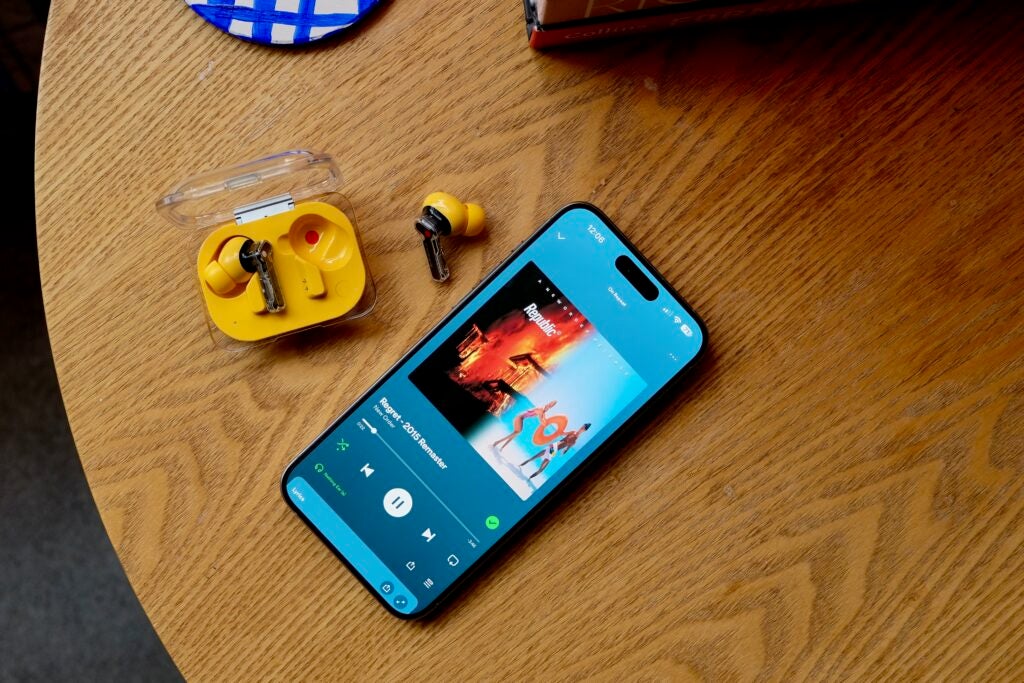
I have always had a soft spot for transparent tech, going as far back as the Game Boy Colour. With the Nothing Ear (a), the top of the case is clear, letting you gaze upon the buds inside. The elongated ear stems are made of clear plastic too, with the insides mostly visible. It makes for a very distinct look that’s both modern and retro in equal measure.
These buds come in three colours: black, white and the yellow I am using for this review. The yellow is instantly the best option, and the colour runs across the buds and the case.
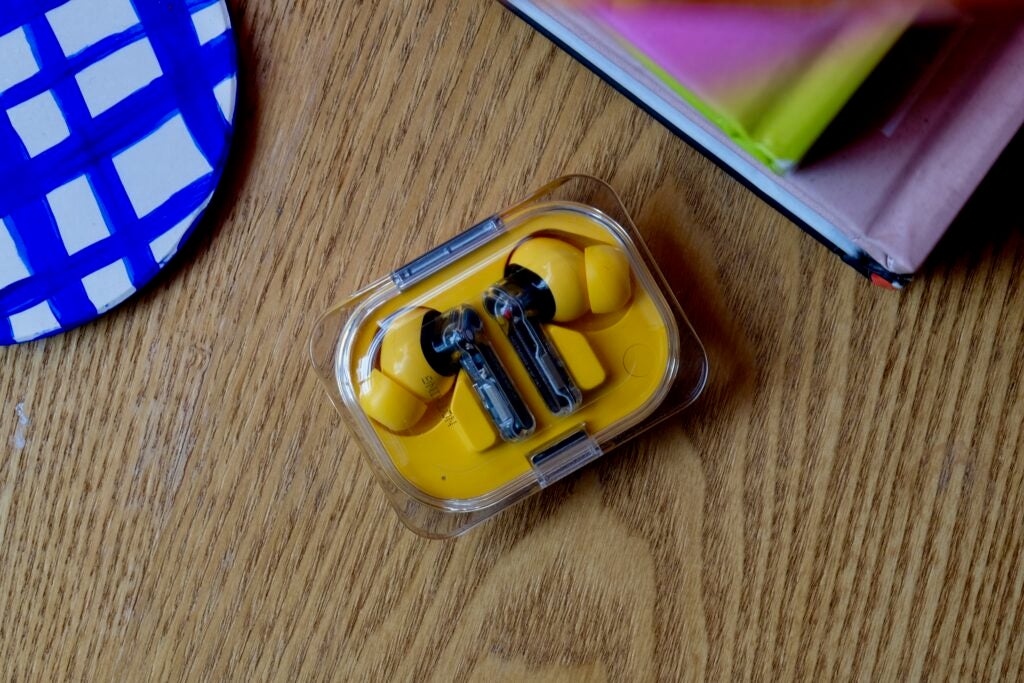
Speaking of the case, it’s dinkier and easier to pocket than the very square case that the higher-end Nothing Buds come in, though not quite as unique as the tube case of the Nothing Ear (stick). There’s a physical pairing button on the inside and a USB-C port on the back. It is constructed from plastic, but it feels sturdy and has an IPX2 rating for protection from dust and water.
The buds themselves have a sweat-resistant IP54 rating and go for that stem-toting design that’ll be familiar to anyone who has used AirPods before. I think the stem adds a little more support to the buds when compared to something like the Sony WF-1000XM5 and I find the fit is usually studier.
The longer stem also gives a prominent place to put the gesture control area, rather than forcing you to tap on the bud while it’s in your ear. Nothing uses a series of pinches here, with a double pinch skipping forward and a longer pinch toggling on and off the active noise cancelling (ANC).
Inside the Nothing X app there’s a way to tweak what each pinch does, with the option to add volume control too. However, having to double pinch the buds to move the volume up (or down) slightly was very unreliable in my testing and I ended up just turning this option off.
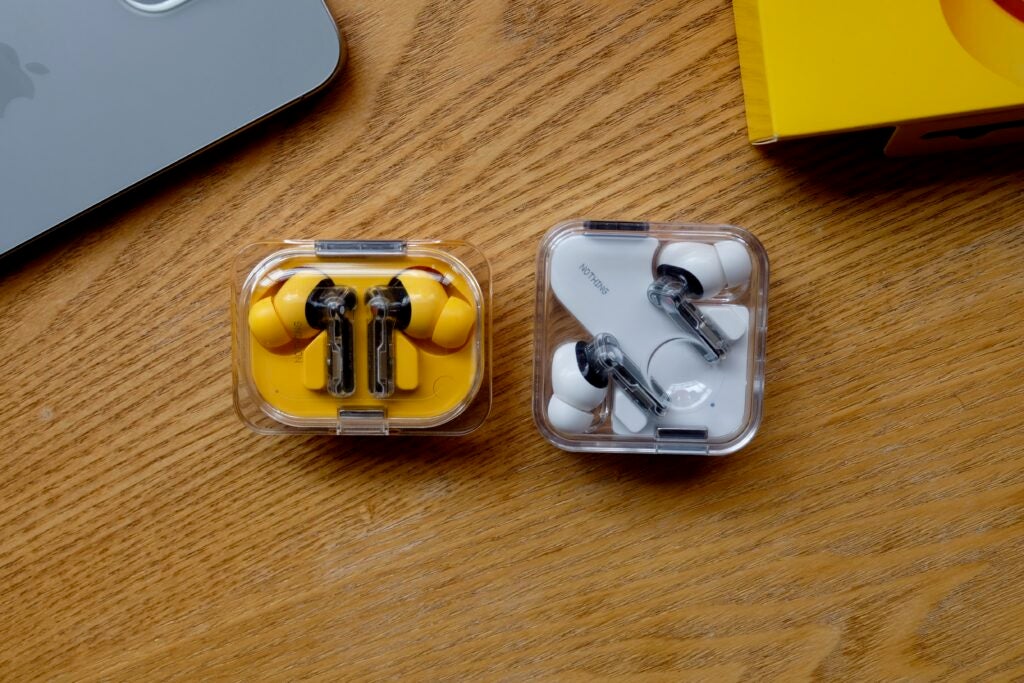
They’re not the comfiest buds though, digging in far more than the AirPods Pro and making my ears a little sore after extended use. There’s every chance this will change with use, but I couldn’t find a fit that was completely comfortable with any of the three included tips
Features
- Excellent ANC for the price
- Basic, but easy to use, app
- LDAC support for Android
Considering the £99/$99 price, there’s a fantastic amount of features available on the Nothing Ear (a).
Of course, there’s ANC – not always a given at this price but becoming far more common – to block out pesky commuter noises or an overly chatty office, but there’s also LDAC (along with the usual SBC and AAC) support for higher-quality streaming on Android, in-ear detection with auto play/pause and a low lag mode aimed at gamers. There is multi-point audio, allowing the buds to connect to two devices simultaneously.
With the ANC, there’s a fair bit of control over how it works. It can be set to High, Mid, Low or Adaptive – the latter of which is supposed to find the optimum level for your surroundings. There are three mics in each bud to help block out noise plus some extra software trickery in the backend.
During the first few days of testing, I jumped between the modes frequently before deciding to just leave it on Adaptive in the hope that would remove any guesswork. In reality, I found the Adaptive mode did very little, and the best results were to be had from just leaving the ANC set to High.
The noise-cancellation is effective in most situations, comfortably erasing office chatter and the high-pitched squeal of machinery outside. Walking down a busy road, the sound of onrushing vehicles was diminished to a respectable level.
The ANC was less successful on the London Underground and with loud public transport, where I often had to double check I hadn’t accidentally turned it off. Once again the low price needs to be taken into account and for the outlay, the ANC is effective and a welcome addition.
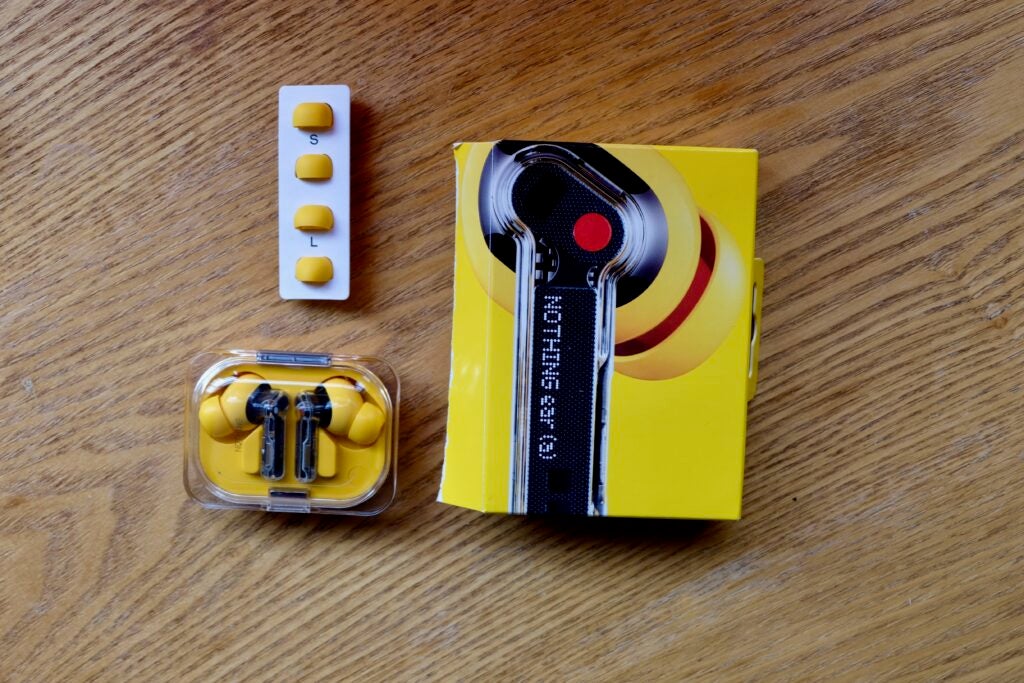
You do need a very firm seal for the ANC to work effectively, and I often struggled to get the buds to stay in place well enough to consistently benefit from the cancellation. This will vary depending on your ears though, but I have used a lot of wireless buds and I have never had fit issues like this before.
The ANC can also be turned off completely, or set to a Transparency mode that lets through some sounds, including voices. The Transparency is adequate, but it doesn’t stand out. Voices come through a little robotic and I had better results just turning ANC off completely when I was speaking to anyone or wanted to hear, for example, a train announcement.
Nothing X is available on iOS and Android and is a well-designed app that features visual elements you’ll find across Nothing’s Android skin, The Android version has a few more features, like enabling LDAC streaming (something not supported on iOS) but mostly the apps are the same.
There’s a simple equaliser for customising audio and four presets (Balanced, More Bass, More Treble, Voice) that can quickly be tapped if you’re not bothered about fussing around. None of these tweaks made a huge difference to the audio and I just left it in the default state for the best, most balanced sound.
Nothing has claimed the buds should last for around 5.5 hours per charge, and the case should be able to charge them up roughly five times. Turn the ANC off and this claim nearly doubles – over 9 hours per bud. I did my own tests on the battery life and my findings were similar to Nothing’s, although with the ANC set to High I would typically get below 5 hours before needing to pop the buds back in the case. A battery drain for an hour with a volume at 50% took the battery down 19%.

This amount charge is perfectly fine – there aren’t many instances when I would use the buds for five hours straight – however it’s on the lower end of the competition. The excellent Cambridge Audio Melomania M100 can last around 10 hours, which is double that of the Nothing Ear (a).
Charging is via the USB-C port on the back only, although you’ll need to pay the extra £30/$50 for the regular Ear to get the benefit of Qi wireless.
Sound Quality
- Good codec support
- Plenty of bass when required
- Crisp vocals
There’s certainly a lot to like about the Nothing Ear (a). If you’ve got this far down the review thinking that Nothing went big on the feature list only to skimp on the audio then you’re mistaken.
I’ve spent the past week being thoroughly impressed by the audio here, struggling to find much fault with the £99/$99 buds. I’ve tested them with Spotify files from an iPhone plus higher-res Apple Music files through the LDAC codec from an Android phone, and the Ear (a) handles everything with ease and a pleasing neutrality that’s not too dissimilar to Apple’s AirPods Pro.
They have an endearing, expansive sound that gives real depth to songs. There’s plenty of detail to vocals, with the XX’s Islands coming across crisp and clear, without being dominated by bass. There’s perhaps not quite as much clarity as the AirPods Pro – but these buds are less than half the price.
When bass is required, it is there – and there’s a Bass Enhance tool in the app that can add more weight if needed. Billie Eilish’s You Should See Me in a Crown is a great test for the bass skills of these buds and they pass, with the pounding chorus rumbling in with just the right amount of punch.
Bright, energetic tracks like Olivia Rodrigo’s Obsessed have plenty of pop even if they can fall down slightly when higher frequency, instrument-heavy segments arrive and things can get a little messy. The addition of ANC can also dull some of the sound quality, though not to the same levels our reviewer found with the Nothing Ear.
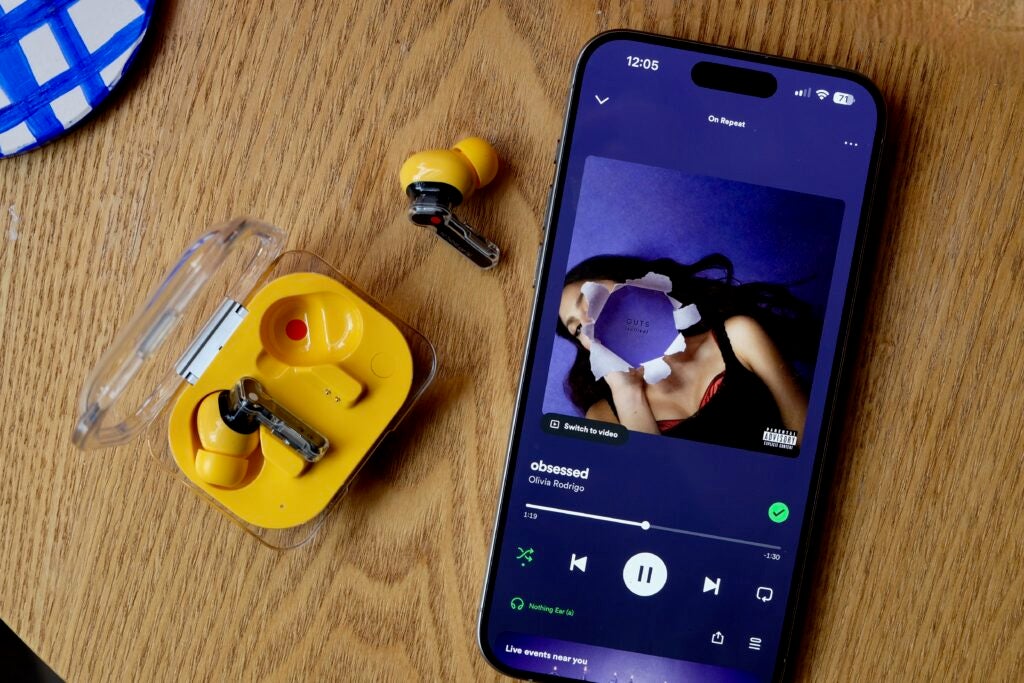
There’s no support for spatial audio, although I don’t think that tech is quite there yet to make that much of a negative.
On the whole, the audio here is very good for the price and there aren’t many buds on the market that offer better sound quality for less than £100/$100.
Latest deals
Should you buy it?
You should buy if you want an excellent budget pair of wireless buds
For the price, there isn’t much better. The standout design, good sound, and often excellent ANC make for a tempting buy.
You shouldn’t buy if you want the best fit
The fit is very much down to the wearer and my experience might be very different from yours – but I found the Nothing Ear (a) to be a little uncomfortable and the uneven fit often made the ANC worse.
Final Thoughts
It’s hard not to be impressed by the Nothing Ear (a) buds. They are a feature-rich set of wireless headphones that comfortably outperform an already tempting price point. They sound good whatever you’re listening to, have a mostly successful ANC system and come packed with extra features like multi-point audio.
The Nothing Ear – the successor to the Ear (2) – are a little pricier and while they pack wireless charging, I don’t think the audio is much better and the case isn’t as well designed. You’ll find excellent rivals in the JBL Live Pro 2 and Cambridge Audio Melomania M100 for slightly more money offering a similar package, although the design of Nothing’s buds wins out for me every single time.
I’d like a slightly tighter and more comfortable fit – possibly with more varied silicon cap sizes – plus a slightly more successful adaptive ANC mode, but these are an easy recommendation for anyone looking for an excellent budget pair of wireless earbuds.
How we test
We test every set of headphones we review thoroughly over an extended period of time. We use industry standard tests to compare features properly. We’ll always tell you what we find. We never, ever, accept money to review a product.
Find out more about how we test in our ethics policy.
Tested for over a week
Tested with real world use
FAQs
You can get 24.5 hours (including the charging case) from the Nothing Ear (a) with ANC turned on. Turn ANC off and that extends battery life to 42.5 hours.
Full specs
The post Nothing Ear (a) appeared first on Trusted Reviews.
https://ift.tt/OKd9lwP
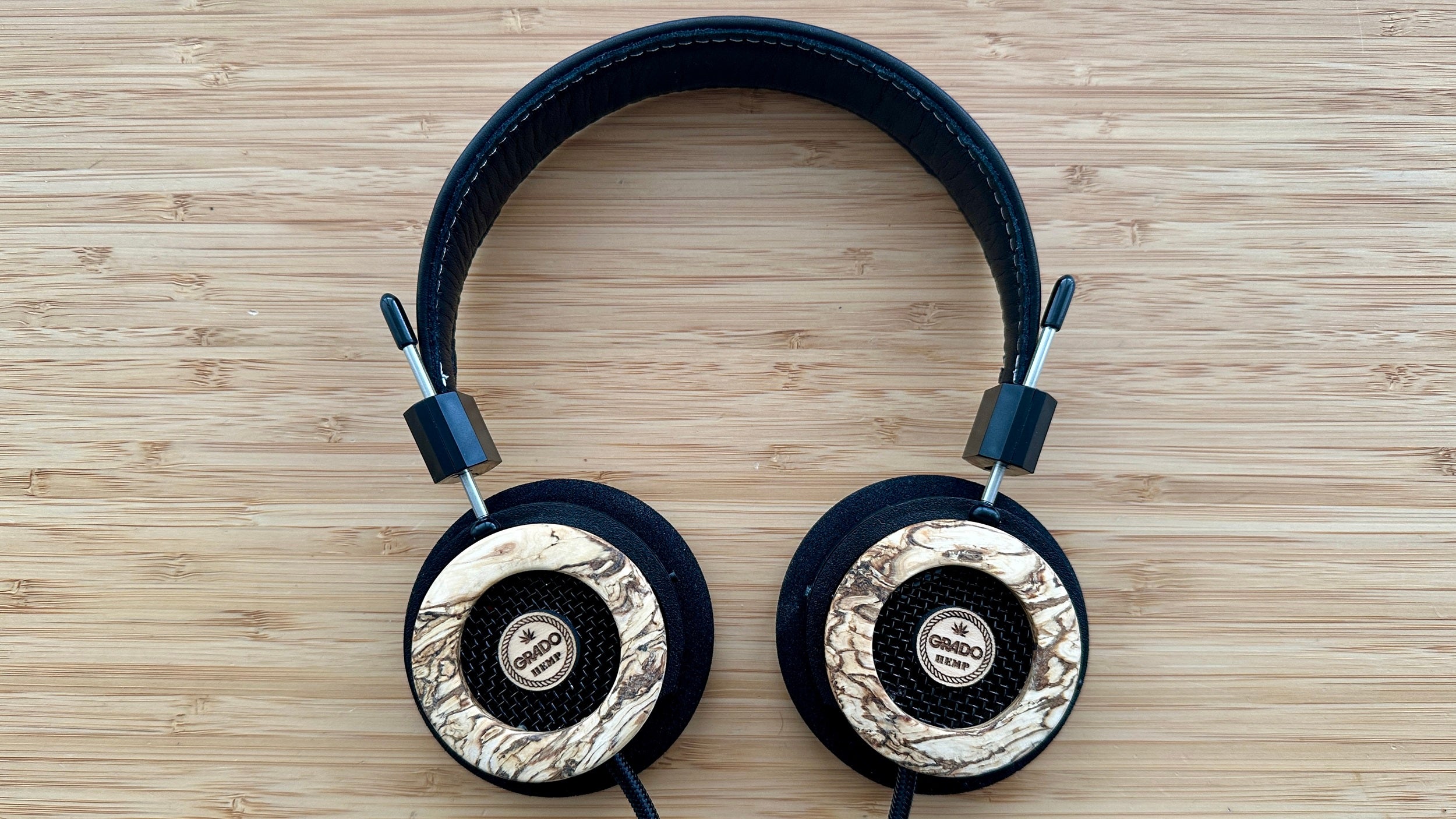
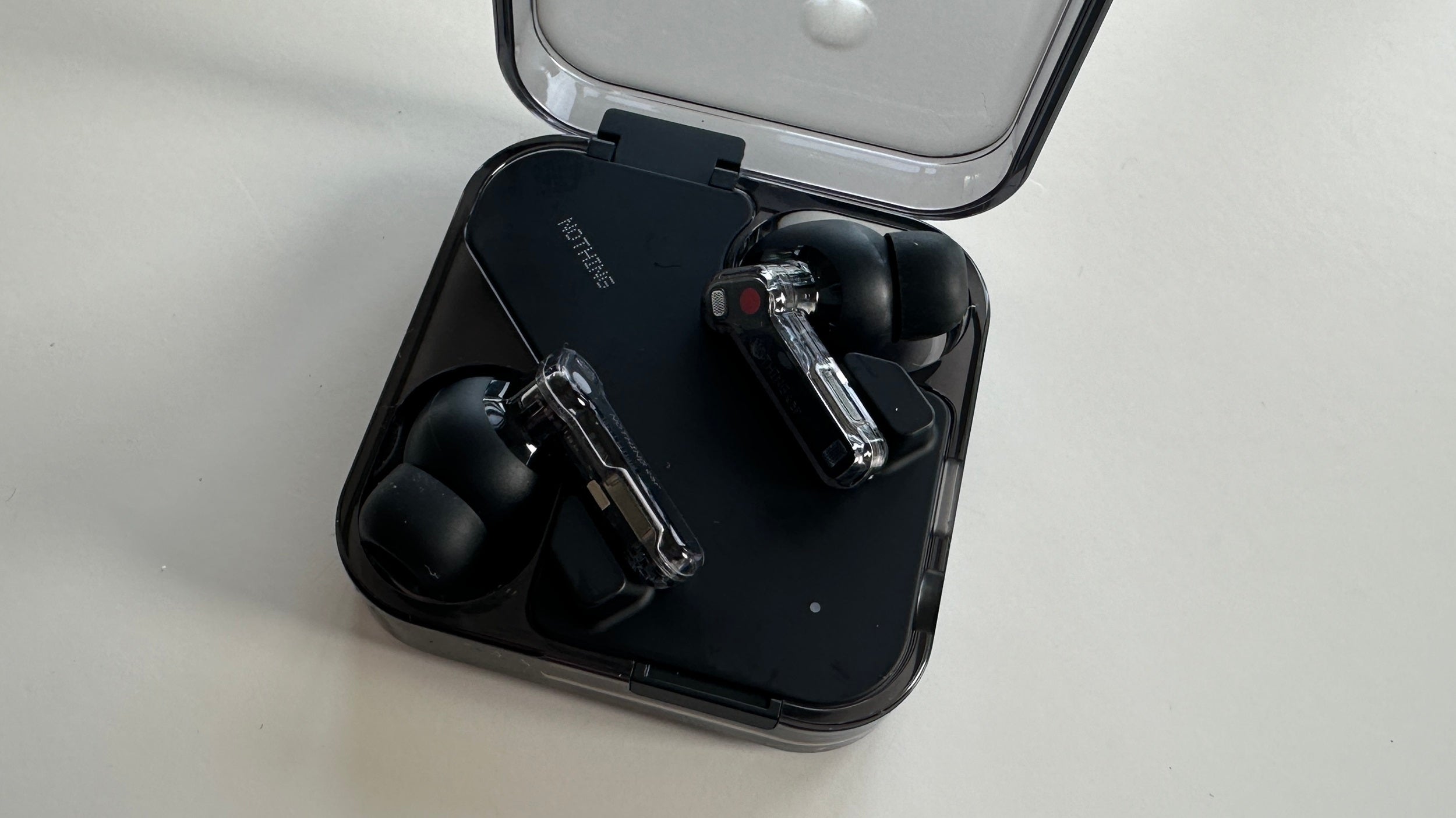
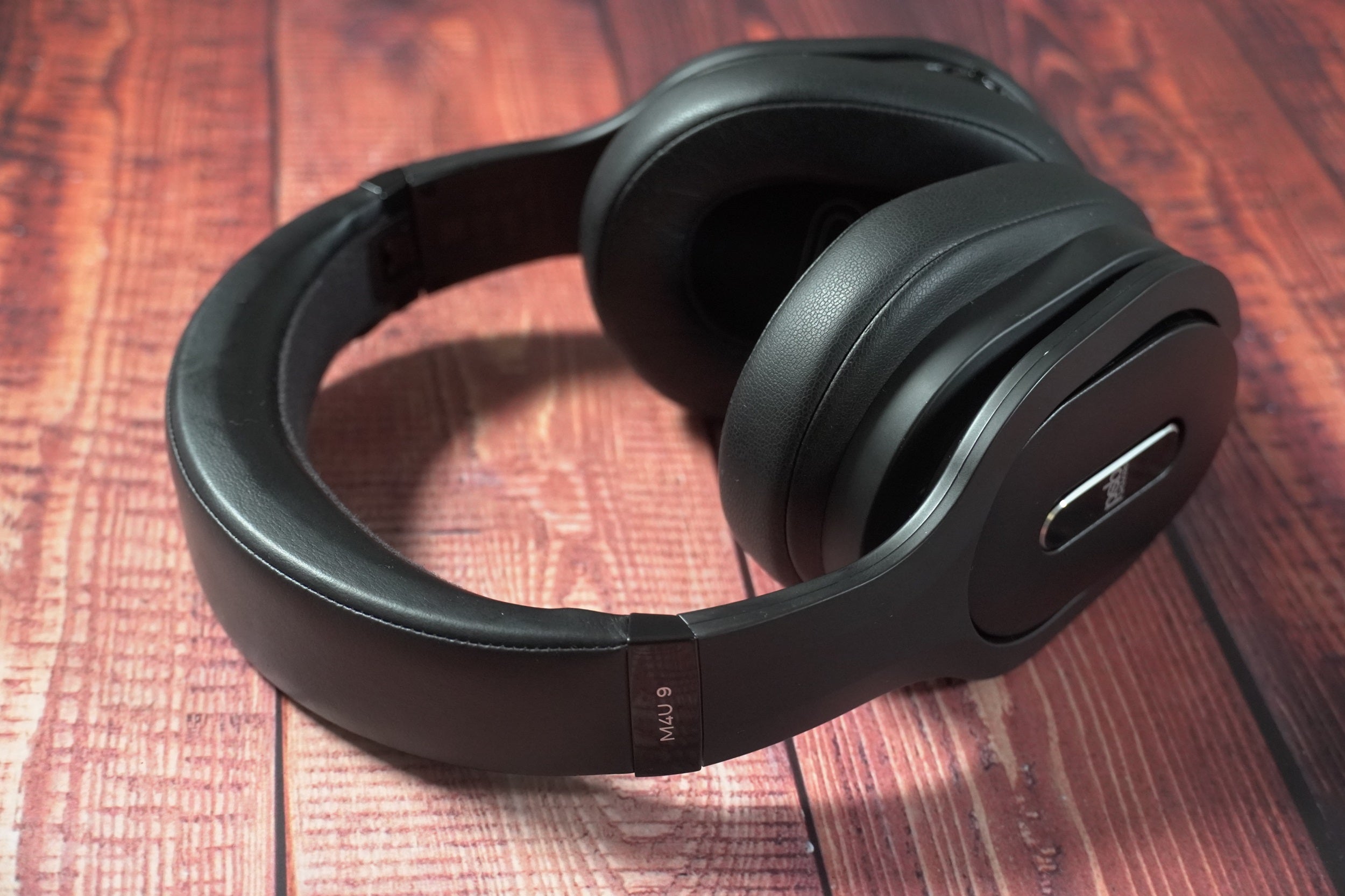
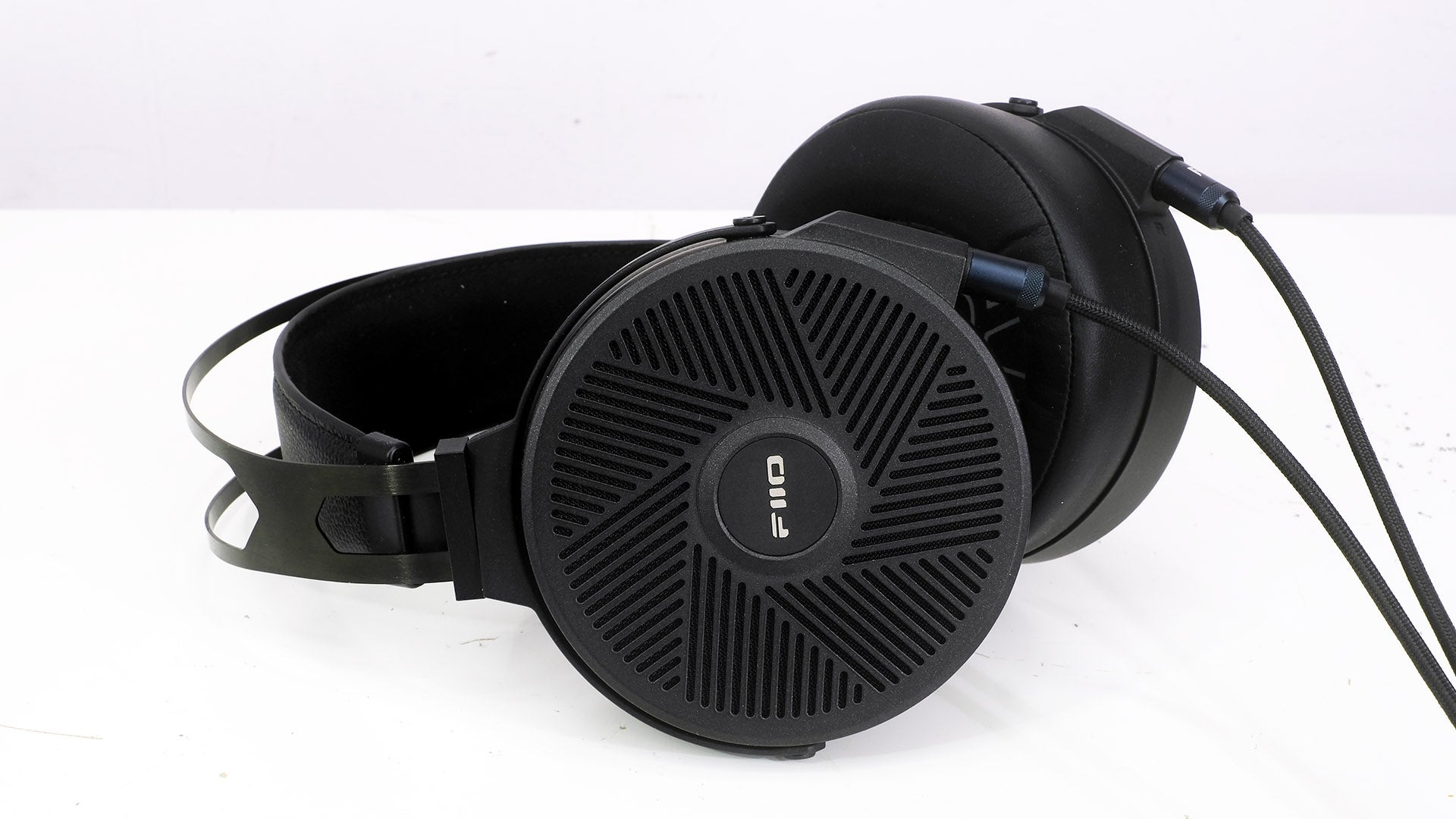
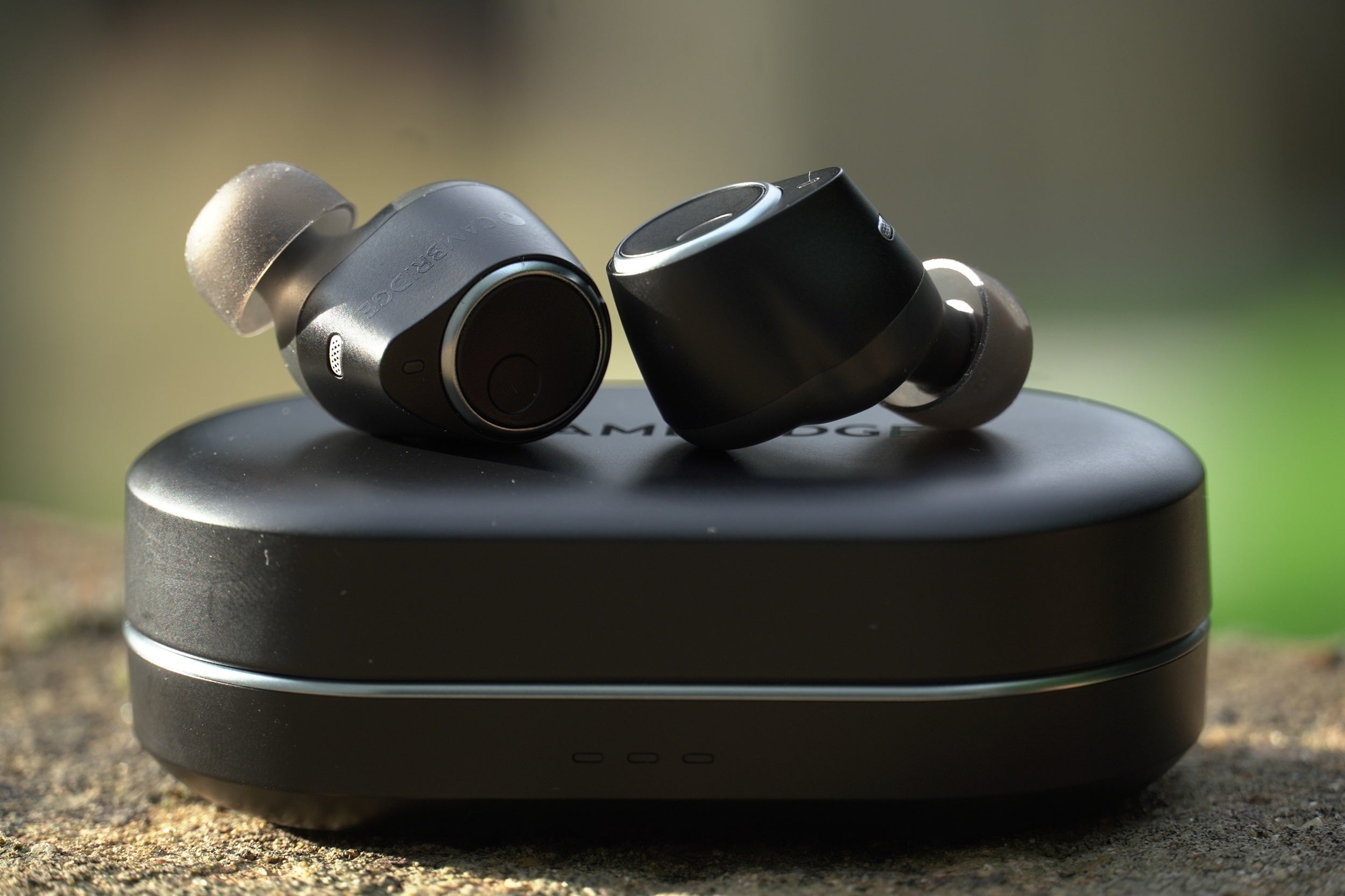
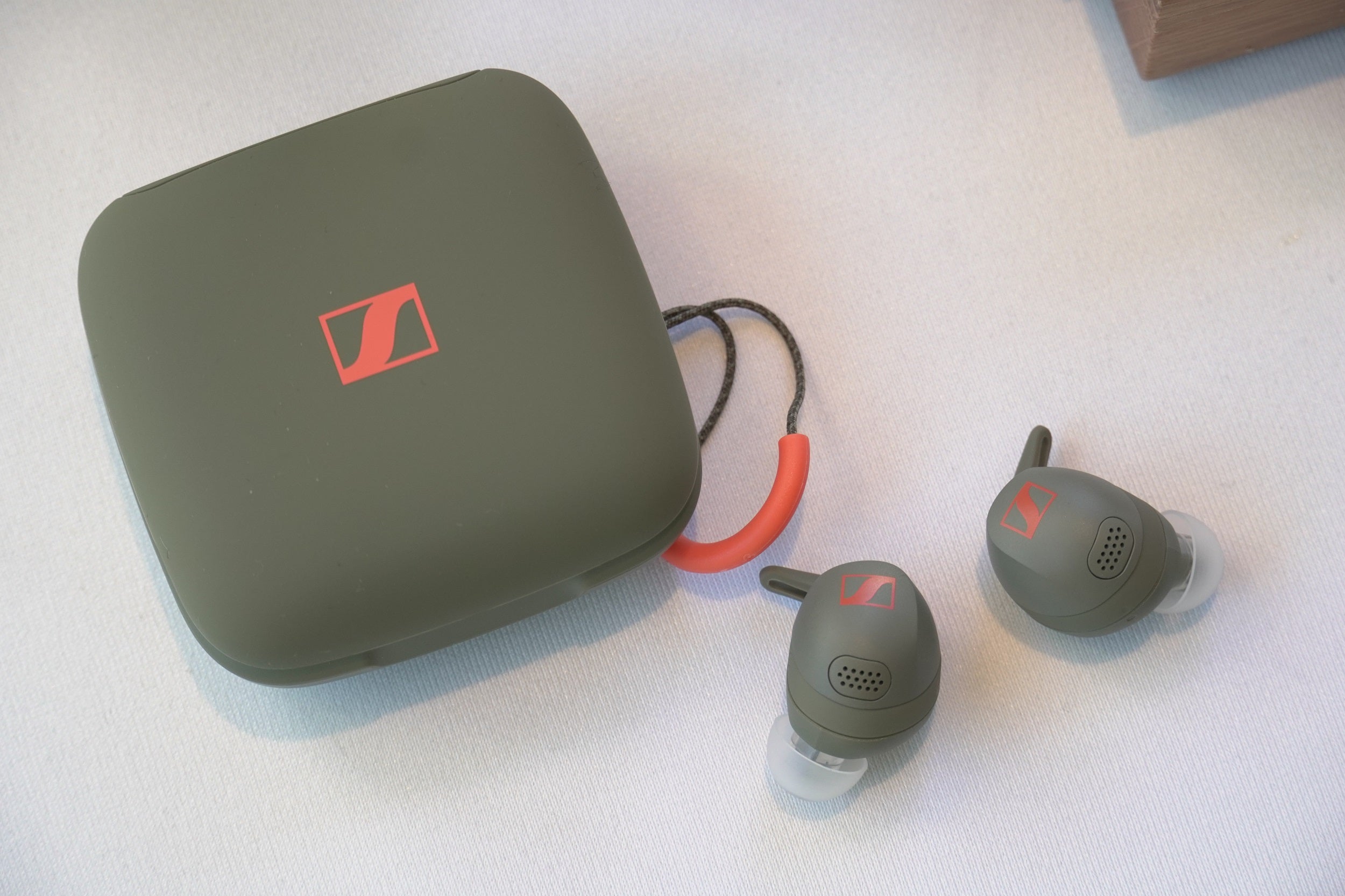
Comments
Post a Comment